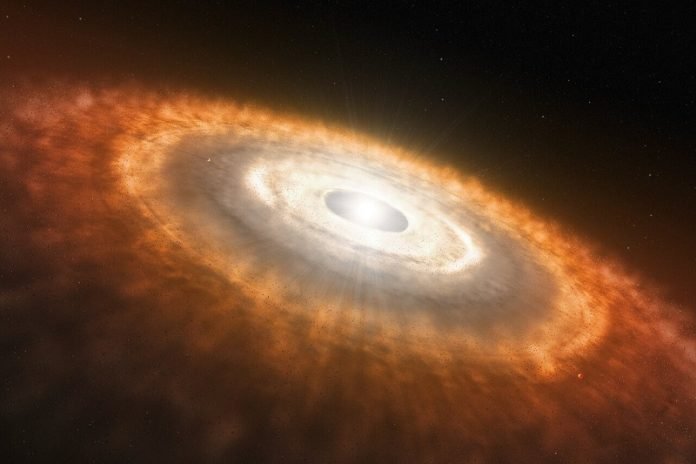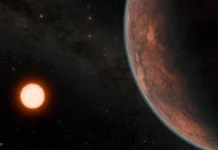
A team of international astronomers has made a groundbreaking discovery with the help of the James Webb Space Telescope (Webb).
For the first time, they’ve observed water and other molecules crucial for the formation of rocky planets in one of the most extreme environments of our galaxy.
This exciting discovery suggests that rocky planets, like Earth, could form in a much wider range of environments than previously thought.
This research is part of the eXtreme UV Environments (XUE) program using the Webb Telescope.
The program’s goal is to explore how planets form in areas around massive stars, which were likely similar to the birthplace of most planetary systems.
This study is crucial as it helps scientists understand the diverse types of planets found outside our solar system, known as exoplanets.
The XUE program is focusing on 15 different disks in three areas of the Lobster Nebula (NGC 6357), which is about 5,500 light-years away from Earth in the Scorpius constellation.
This nebula is known for being one of the youngest and nearest places where massive stars are formed, housing some of the largest stars in our galaxy.
Massive stars are significant because they are hotter and emit more ultraviolet (UV) radiation.
This intense radiation can disrupt the gas in the surrounding space, shortening the expected life of the disks where planets form to as little as a million years.
With Webb’s advanced capabilities, astronomers can now study the effects of UV radiation on the areas where rocky planets form around stars similar to our sun.
“Webb is unique because it has the necessary resolution and sensitivity to study these planet-forming disks in regions where massive stars are being born,” stated María Claudia Ramírez-Tannus from the Max Planck Institute for Astronomy in Germany, who leads the team.
The team is using Webb’s Medium Resolution Spectrometer (MRS) of the Mid-InfraRed Instrument (MIRI) to analyze the physical properties and chemical composition of these rocky-planet-forming regions in the Lobster Nebula.
Their initial focus is on a protoplanetary disk known as XUE 1, found in the star cluster Pismis 24.
“Only MIRI’s specific wavelength range and resolution allow us to investigate the warm gas and dust where rocky planets are formed,” explained team member Arjan Bik from Stockholm University.
XUE 1, situated near several massive stars in NGC6357, has likely been bombarded with high UV radiation throughout its existence. Despite these harsh conditions, the team discovered various molecules that are essential for the formation of rocky planets.
“The inner disk around XUE 1 is much like those found in closer, less extreme star-forming regions,” mentioned Rens Waters from Radboud University in the Netherlands.
They detected water, carbon monoxide, carbon dioxide, hydrogen cyanide, and acetylene, although the emissions were weaker than some models predicted, suggesting a smaller outer disk radius.
Lars Cuijpers, also from Radboud University, expressed excitement over detecting these molecules under such severe conditions for the first time.
The team also found small, partially crystalline silicate dust on the surface of the disk, which is considered a key component for building rocky planets.
This discovery is promising for the formation of rocky planets, as the conditions in XUE 1’s inner disk are similar to those in more familiar star-forming regions that typically only form low-mass stars.
It indicates that rocky planets could potentially form in a broader range of environments.
The team eagerly awaits the remaining observations from the XUE program. “XUE1 shows us that the conditions to form rocky planets are present, so now we need to see how common this is,” says Ramírez-Tannus.
Upcoming observations will help determine how frequently these planet-forming conditions occur in similar environments.
These significant findings have been published in The Astrophysical Journal Letters, marking a new chapter in our understanding of where and how rocky planets can form in the universe.



